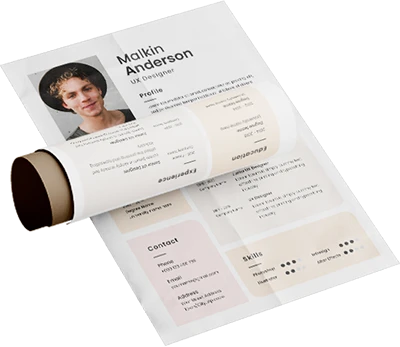Table of Content
Discover How Many Bullet Points per Job You Should Add to Your Resume in 2025
Writing a resume can feel like solving a puzzle, especially when you’re staring at that blank page wondering how much detail to include for each job. You want to showcase your achievements without overwhelming hiring managers who spend mere seconds scanning each application. The question that stumps countless job seekers is deceptively simple: how many bullet points per job on a resume should you actually include?
The answer isn’t as straightforward as you might hope, but don’t worry—we’ve got you covered. Getting this balance right can mean the difference between landing an interview and having your resume disappear into the digital void.
Let’s dive into the expert-backed strategies from professional resume writing services that will help you craft bullet points that capture attention and get results.
The Golden Rule: 3-5 Bullet Points Per Job
Most career experts agree that 3-5 bullet points per job is the sweet spot for resume writing. This range gives you enough space to highlight your key accomplishments without creating a wall of text that recruiters will skip over. However, this isn’t a rigid rule—it’s more like a helpful guideline that you can adjust based on several important factors.
This number is enough to show your impact without overwhelming the page—or the recruiter. Remember, hiring managers typically spend less than seven seconds initially reviewing each resume, so every bullet point needs to earn its place on the page.
Think of your bullet points as your greatest hits album, not your complete discography. Each one should tell a compelling story about your professional value and potential contribution to your next role. And when done well, there is no better solution than this when looking for how to make your resume stand out.
Why Experience Level Changes Everything

Your career stage dramatically influences how many bullet points you should include per position. The reasoning is simple: more experience typically means more accomplishments worth highlighting, while entry-level positions may have fewer measurable achievements to showcase.
Entry-Level Professionals (0-3 Years)
If you’re early in your career journey, then you probably don’t have many professional accomplishments just yet, so it makes sense to list just two to three bullet points per job. Don’t let this discourage you—focus on any achievements, improvements you made, or skills you developed, no matter how small they might seem.
For recent graduates or career changers, consider including internships, volunteer work, or relevant coursework that demonstrates your potential. Even part-time positions can showcase valuable transferable skills when presented effectively.
Mid-Level Professionals (3-10 Years)
Mid-level roles: 5-7 bullet points per job works well for professionals who have established track records and multiple accomplishments to highlight. At this stage, you likely have concrete results, leadership experiences, and specialized skills that deserve detailed explanation.
This is where you can really showcase your professional growth and increasing responsibilities. Focus on accomplishments that demonstrate progression and readiness for the next level in your career.
Senior and Executive Professionals (10+ Years)
Senior/executive roles: 7-10 bullet points per job reflects the complex nature of high-level positions. Senior and executive roles are in a league of their own. Hiring managers will be extra thorough and invested in hiring the right person for a high-profile position. Therefore, listing up to eight bullets per job can be expected.
For leadership roles, you’ll want to highlight strategic initiatives, team management, budget oversight, and measurable business impact. These positions often require demonstrating influence across multiple areas of an organization.
Boost your chances of landing your dream job with a standout resume!
Get Noticed
The Relevance Factor: Quality Over Quantity
Not every job on your resume deserves equal treatment. Use more bullets for recent, relevant roles: Older or less related jobs can be trimmed. This strategic approach of prioritizing quality over quantity in your resume helps you allocate space where it matters most while keeping your resume focused and concise.
Current and Recent Positions (Last 2-3 Years)
Use 4–5 bullet points per job. These are the roles doing the heavy lifting—so give them space. Focus on measurable achievements that clearly align with the job you’re applying for. Your most recent experience is typically most relevant to hiring managers and deserves the most detailed explanation.
Make sure these bullet points directly connect to the requirements of your target role. This is where keyword optimization and alignment with job descriptions becomes crucial for both human readers and Applicant Tracking Systems (ATS).
Older or Less Relevant Positions
Use 1–3 bullet points max. Stick to high-level impact or transferable skills. If a role isn’t directly related to your current goals, keep it short—or drop bullets entirely. For positions more than 10-15 years old, consider whether they add value to your current career narrative.
Sometimes a simple job title, company, and dates are sufficient for older positions, especially if they don’t directly relate to your target role. This approach keeps your resume focused on what matters most to potential employers.
Crafting Effective Bullet Points: Beyond the Numbers
The number of bullet points matters, but what you put in them matters even more. Good resume bullet points contain an action verb, are specific in describing your project/task and contain numbers to describe impact. Each bullet point should follow a clear formula that showcases your contributions and results.
The STAR Method in Action: What is It?
The STAR method can help you create impactful descriptions for each experience on your resume. This approach helps you structure bullet points that tell a complete story:
- Situation: The context or challenge you faced
- Task: Your specific responsibility or goal
- Action: What you did to address the situation
- Result: The measurable outcome or impact
For example, instead of writing “Managed social media accounts,” try “Developed and executed social media strategy for five platforms, increasing follower engagement by 45% and driving 30% more website traffic over six months.”
Action Verbs and Quantifiable Results
Begin bullet points with verbs like “managed,” “implemented,” or “led” to showcase accomplishments. Strong action verbs immediately communicate your role and level of responsibility, while specific numbers provide concrete evidence of your impact.
Avoid weak phrases like “responsible for” or “helped with” that don’t clearly define your contribution. Instead, lead with powerful verbs that demonstrate ownership and achievement.
Industry-Specific Considerations for Common Industrial Niches

Different industries have varying expectations for resume detail and format. Understanding these nuances can help you tailor your approach for maximum impact in your specific field.
Tech and Creative Industries
Some industries, like marketing or tech, favor concise and sleek resume formats. These fast-moving fields often prefer brevity and clear demonstration of results over exhaustive detail. Focus on metrics that matter—user engagement, system performance improvements, or project delivery timelines, as well as relevant certifications on resume.
Consider including links to portfolios or GitHub repositories that provide additional context for your accomplishments without cluttering your resume with excessive bullet points.
Research and Academic Fields
In other fields, like research or academia, an extensive career is seen as an advantage. Therefore, more detailed resumes with several bullets are likely to capture a hiring manager’s attention. These fields value thorough documentation of achievements, publications, and research contributions.
For academic positions, you might need more bullet points to adequately cover research projects, publications, teaching experience, and grant funding—all of which contribute to your professional profile.
Common Mistakes to Avoid
Even with the right number of bullet points, certain resume mistakes can undermine your resume’s effectiveness. Avoiding these pitfalls will help ensure your bullet points work in your favor.
Listing Responsibilities Instead of Achievements
Listing job duties instead of showing results is a common mistake that job applicants make. Your resume should demonstrate what you accomplished, not just what you were supposed to do. Transform mundane tasks into achievement statements by focusing on outcomes and improvements.
Instead of “Answered customer service calls,” try “Resolved 50+ customer inquiries per shift, achieving 98% satisfaction rate and reducing average call time by 25%.”
Inconsistent Formatting and Length
Maintain consistency in your bullet point structure throughout your resume. Use the same tense for similar timeframes (past tense for previous roles, present tense for current position), and keep bullet points roughly similar in length for a polished appearance.
If your bullet points are complete sentences, use periods; if they are short phrases, omit them for a cleaner look. Whatever format you choose, apply it consistently across your entire resume.
Special Situations: Adapting Your Approach

Certain career situations require modified approaches to bullet point strategy. Understanding how to adapt your format for these scenarios can help you present your experience most effectively.
Career Changes and Gaps
When transitioning between industries or returning to work after a gap, your bullet points should emphasize transferable skills and relevant experiences. When transitioning to a new industry or role, aim for 4-6 bullet points per position, focusing on those achievements most relevant to the new industry.
Focus on accomplishments that demonstrate skills valued in your target field, even if they came from different industries or contexts.
Multiple Roles at One Company
If you’ve held multiple positions at the same company, you can list them separately with their own bullet points, or combine them under one company heading with subsections for each role. The approach depends on how different the roles were and how much space you have available.
For similar roles with progressive responsibility, combining them can show career growth while conserving space. For distinctly different positions, separate listings might better highlight diverse skills and experiences.
Making Your Decision: A Practical Framework
When determining how many bullet points to include for each position, use this practical decision-making framework:
- Consider the role’s relevance to your target position (high relevance = more bullets).
- Evaluate your tenure in the position (longer tenure typically means more accomplishments).
- Assess the seniority of the role (higher-level positions warrant more detail).
- Check your overall resume length (aim for 1-2 pages total depending on experience level).
- Review space allocation across all positions to ensure balance.
- Test readability on both desktop and mobile devices.
This systematic approach helps ensure you’re making strategic decisions about bullet point allocation rather than arbitrary choices.
Frequently Asked Questions
| Should I use bullet points or paragraphs on my resume? Bullet points are almost always better than paragraphs on a resume. They increase white space, improve readability, and make it easier for hiring managers to quickly scan your accomplishments. Paragraphs are difficult to read quickly and can cause important information to get lost. The only exception might be your professional summary, where a brief paragraph can work effectively. |
| How long should each bullet point be on a resume? Each bullet point should ideally be 1-2 lines long and contain 60-180 characters. Anything longer becomes difficult to scan and defeats the purpose of using bullet points. If you find yourself writing longer descriptions, consider breaking them into two separate bullet points or tightening your language to focus on the most important details. |
| Can I use more than 5 bullet points for my current job? Yes, you can use more than 5 bullet points for your current role, especially if it’s highly relevant to your target position. For current positions, 5-7 bullet points are acceptable, and senior-level roles might warrant up to 8-10 bullets. However, ensure each bullet point adds genuine value and isn’t just filler content. Quality should always take precedence over quantity. |
| Do I need bullet points for every job on my resume? No, not every job requires bullet points. For older positions (10+ years), brief roles, or jobs unrelated to your target career, you can simply list the job title, company, and dates without bullet points. Focus your detailed bullet points on recent, relevant experience that demonstrates your qualifications for your desired role. |
| How do I make my bullet points ATS-friendly? To make bullet points ATS-friendly, use standard black dots (•) rather than fancy symbols, start with strong action verbs, include relevant keywords from the job description, and keep formatting simple and consistent. Avoid graphics, unusual fonts, or complex formatting. Save your resume as a .docx or PDF file, and ensure each bullet point is concise and clearly structured. |
Conclusion: Your Next Steps to Resume Success
Understanding how many bullet points per job on a resume requires balancing multiple factors: your experience level, role relevance, industry expectations, and ATS requirements. The magic number isn’t really magic—it’s strategic.
Start with the 3-5 bullet point guideline, then adjust based on your specific situation. Focus on achievements over responsibilities, use strong action verbs, and quantify your impact whenever possible. Remember that quality trumps quantity every time.
Your resume is your personal marketing document, and every bullet point should contribute to the story of why you’re the ideal candidate for your target role. Take the time to craft compelling, specific bullet points that showcase your unique value proposition.
Ready to transform your resume? Start by auditing your current bullet points against these guidelines, then refine them to better highlight your achievements and potential. Your future self—and your career—will thank you for the investment.

Unleash your brand story`s potential with eContentSol – your creative writing companion. We craft narratives that captivate. Ready to elevate your content game? Dive into creativity with us and let`s bring your ideas to life.


